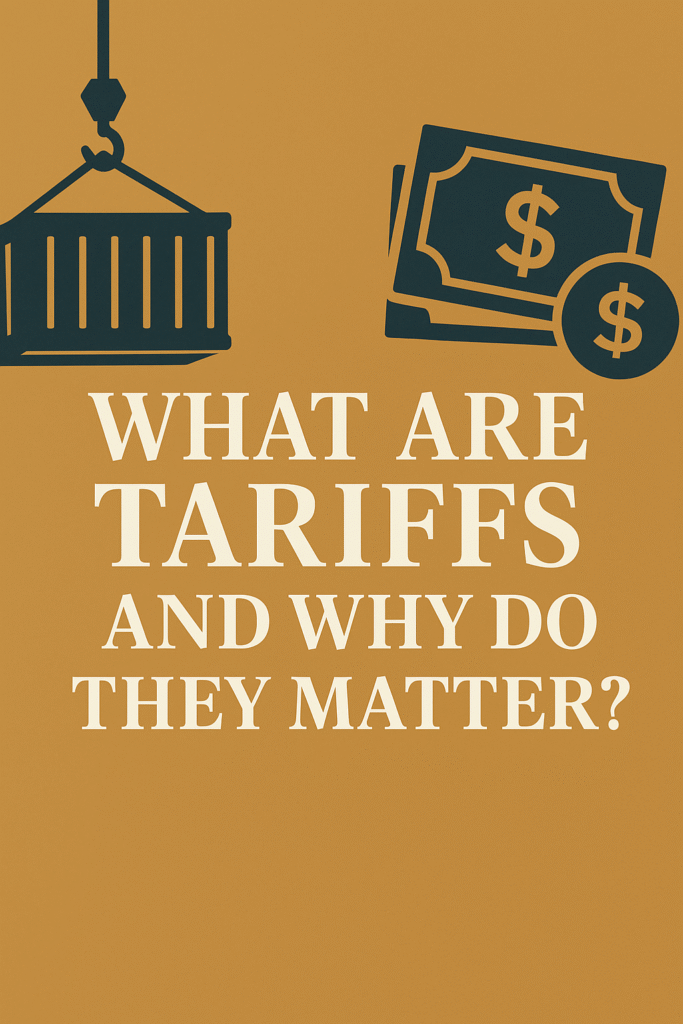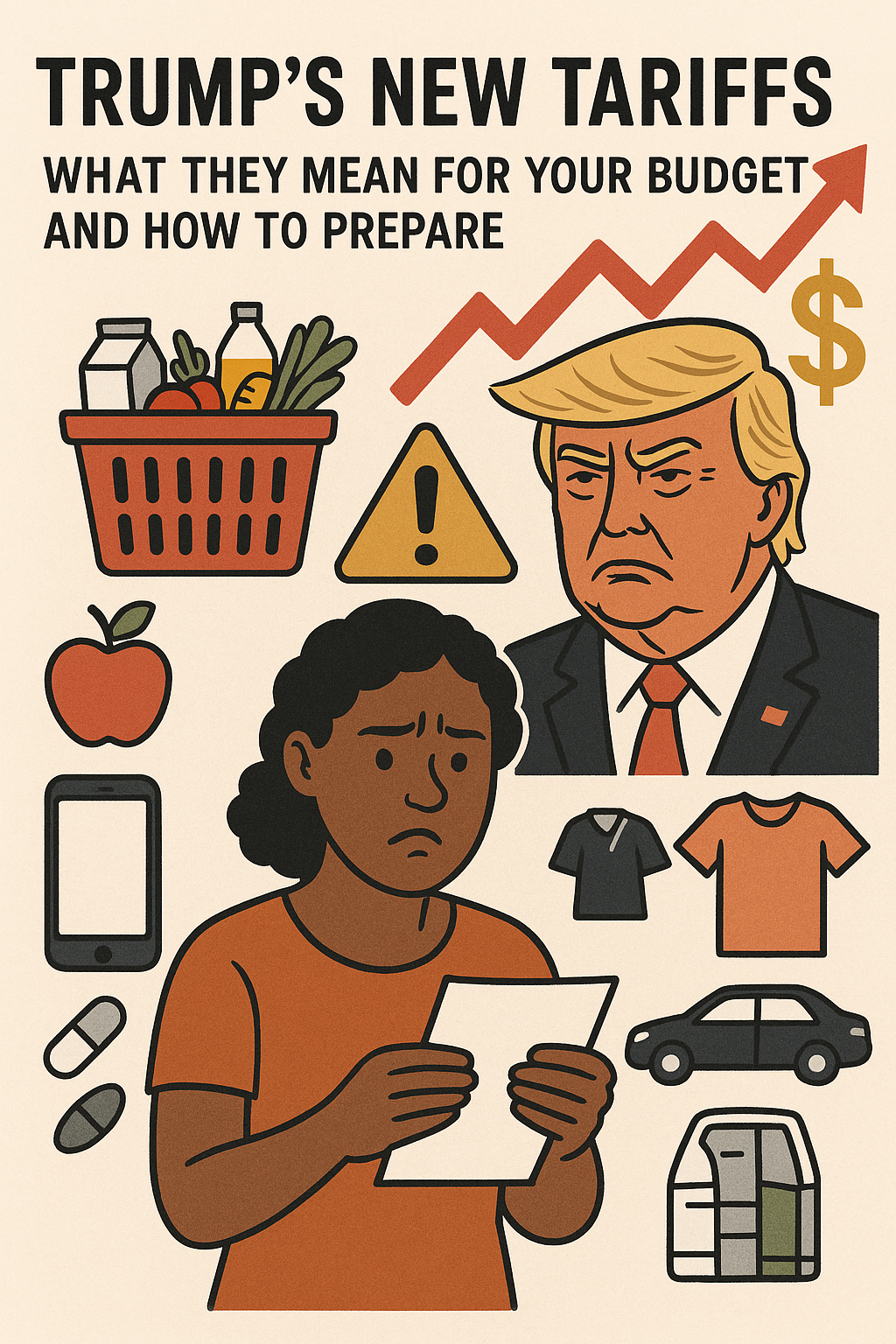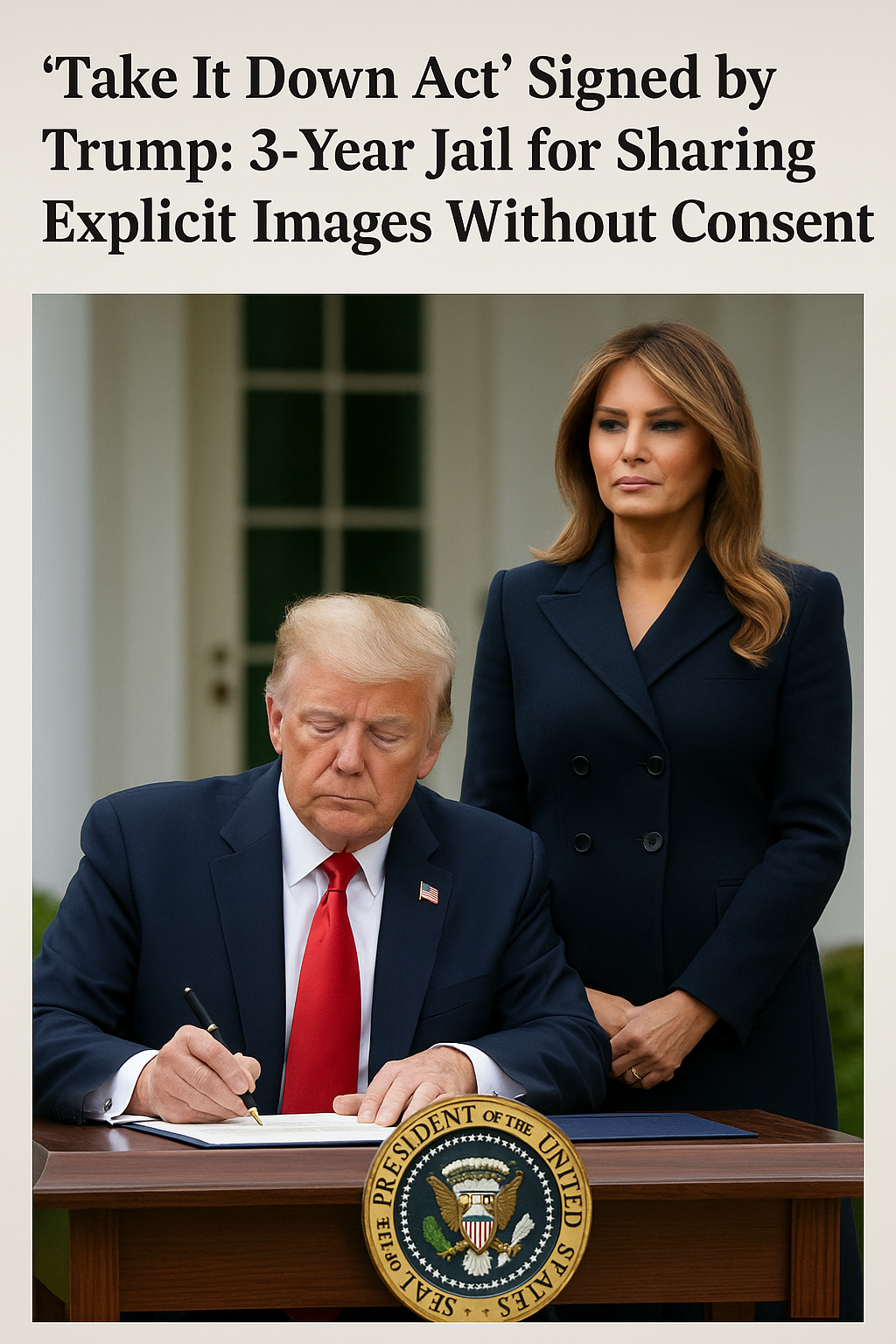President Donald Trump’s new tariffs could make everyday things cost more for Americans. That means you might have to pay higher prices at the store. These new rules, along with old ones and reactions from other countries, could also make people more worried about the economy.
Financial experts warn that the increased cost of imported goods may lead to price hikes across sectors, affecting everything from groceries to car repairs. Here’s how these changes could affect your daily life and what steps you can take to prepare.

What Are Tariffs and Why Do They Matter?
Tariffs are taxes placed on goods imported from other nations. Businesses that import foreign products must pay these taxes, often passing the added expense onto consumers through higher prices.
Trump has defended these actions as a way to strengthen American industries and raise government revenue. But in today’s interconnected global economy, where many consumer products rely on parts or labor from abroad, the real-world result is likely to be higher prices for U.S. households.
“These costs will reach consumers quickly,” says Josh Stillwagon, an economics professor at Babson College. “As soon as stores restock inventory, we’ll start to see the price jumps.”
Will Everyone Be Affected in the Same Way?
No. The burden of tariffs will fall unevenly across income groups. Lower-income families, who tend to spend a larger share of their income on essentials like food, household goods, and utilities, maybe hit hardest.
Gustavo Flores-Macias, a Cornell University public policy professor, notes that even modest price increases can disproportionately impact these households. When basic goods like toothpaste or detergent become more expensive, it stretches tight budgets even further.
Expensive items, such as cars, will also become less affordable. Auto tariffs could raise the cost of a new imported vehicle by several thousand dollars, a hit that wealthier consumers may absorb more easily than middle- or lower-income buyers.
“This functions like a regressive tax,” says Dipanjan Chatterjee, a vice president at Forrester.
What Does This Mean for Jobs?
While the administration hopes tariffs will encourage domestic manufacturing, experts caution that they could lead to job losses or wage reductions in the short term.
“If companies face shrinking profits or have to switch suppliers, that could result in layoffs,” says Flores-Macias. “Lower-wage workers are usually the first to feel those effects.”
Economist Susan Helper, a former White House advisor, adds that while tariffs could potentially support wage growth in certain cases, there isn’t enough stability for businesses to make major investments in job creation right now.
“Firms aren’t confident that these tariffs will last long enough to justify building new facilities,” she explains.
Which Items Will Get More Expensive?
The tariffs apply to imports from most of America’s trading partners, meaning a wide variety of products could see price hikes. Consumers might notice higher costs for items like fresh produce, smartphones, over-the-counter medications, clothing, and auto parts.
Supermarkets could be the first to reflect these changes. Perishable goods have quicker turnover, meaning new, more expensive inventory arrives sooner. Stillwagon expects electronics and home appliances to follow in the months ahead.
John Breyault of the National Consumers League points to data from Yale’s Budget Lab showing that low-income households could lose nearly $1,000 annually due to one recent tariff policy alone. Clothing prices may climb as much as 17%, and the cost of a new home could rise by $9,200 due to pricier construction materials.
Some products, like bananas and coffee, can’t be easily sourced from within the U.S., so prices there are likely to rise regardless of any domestic efforts.
“This won’t be a one-time spike,” Stillwagon warns. “We could see lasting inflation for many goods.”
Helper adds, “For some items, people may just pay the difference. But for others, they’ll probably start making different purchasing choices.”
How Can You Prepare?
If there are non-perishable items you use regularly, it may be wise to buy a little extra before prices go up—just don’t go overboard.
“Stocking up makes sense for essentials, but avoid the kind of panic buying we saw during the early days of COVID,” Stillwagon advises. Panic buying can create shortages and drive prices even higher.
Breyault reminds consumers to be practical: “Only stock up on items you can store properly and use before they spoil.”
Looking for alternatives is also a good strategy. Consider second-hand or refurbished electronics, generic brands over name-brand items, or growing your own vegetables if possible. Price comparison between brands can also help stretch your budget further.
Chatterjee emphasizes the need for long-term adjustments: “This isn’t a short-term event. Trade policies could remain unchanged for years, depending on who holds office next.”
What Should You Watch For?
Shrinkflation—where manufacturers reduce package sizes instead of raising prices—is expected to become more common. Breyault suggests checking the unit price on grocery items to make sure you’re getting the best value.
Not all states require this, but where they do, it helps consumers spot when they’re getting less for the same price.









